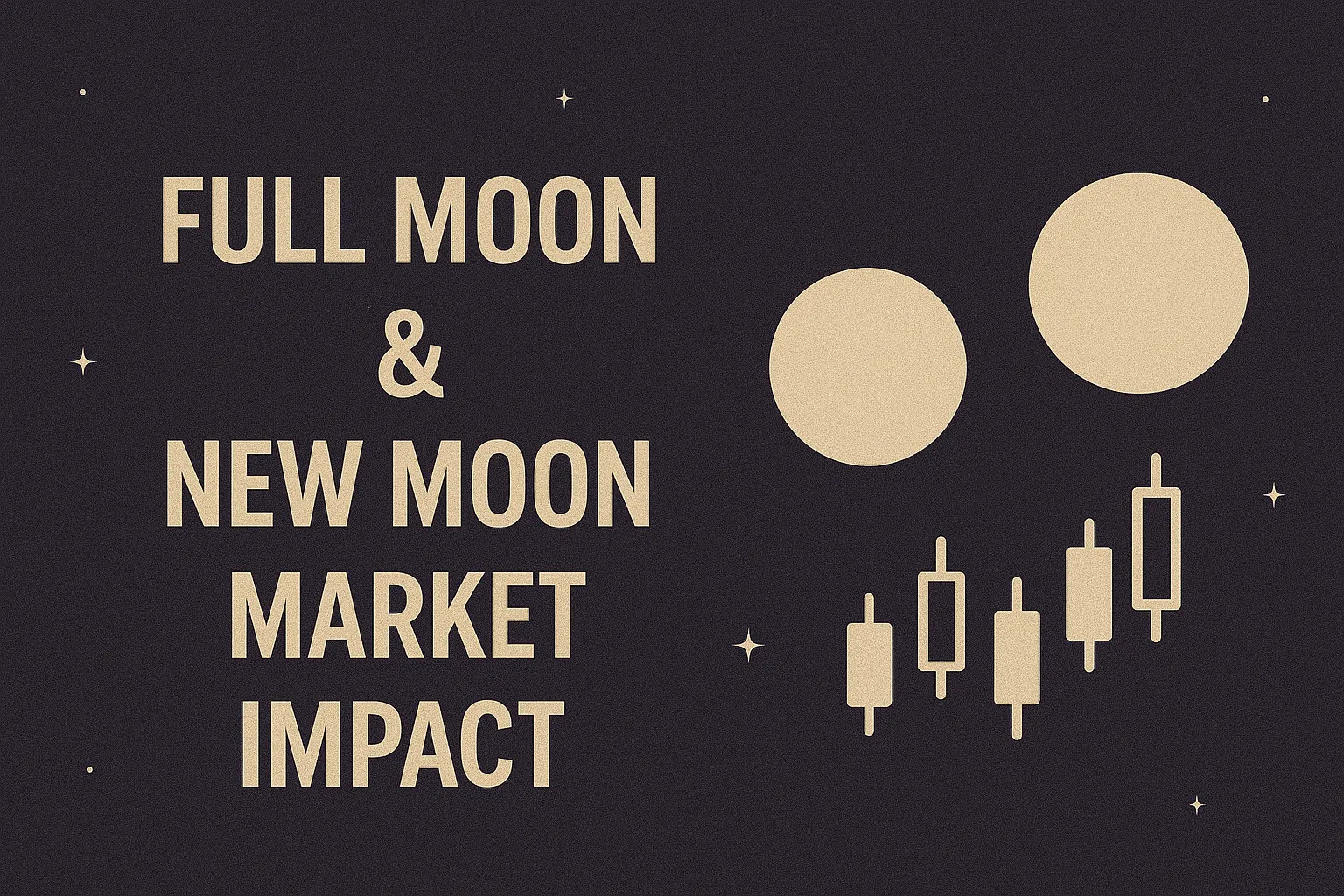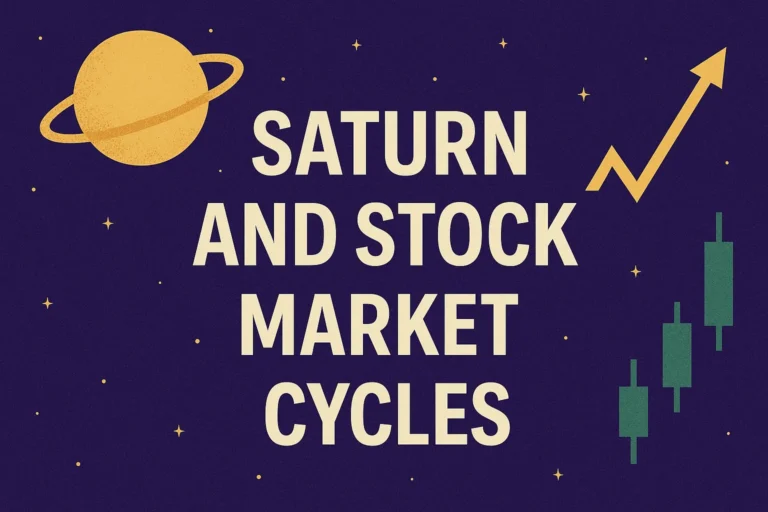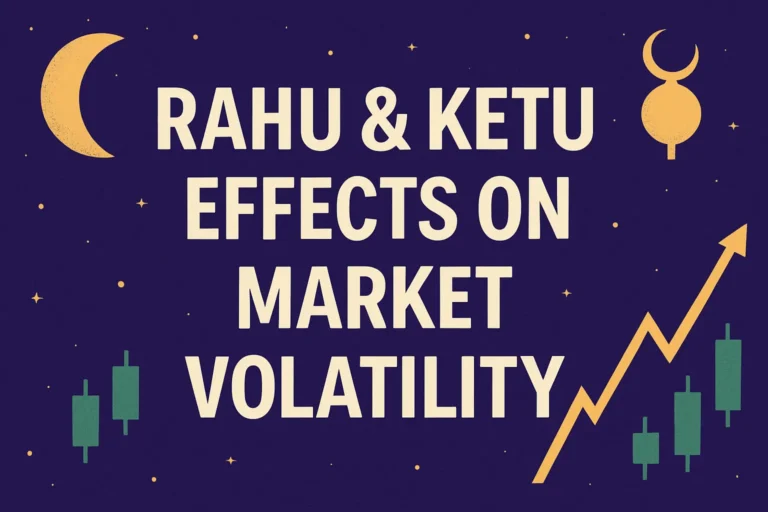Full Moon & New Moon Market Impact
The lunar cycle has fascinated humans for centuries, influencing tides, moods, and even financial markets. In Vedic astrology, the Full Moon (Purnima) and New Moon (Amavasya) are considered energetically significant, often impacting human behavior, emotions, and decision-making.
Stock traders who observe market psychology closely often note a shift in sentiment, volatility, or volume during these lunar phases. In this article, we explore the astrological and psychological links between the moon phases and stock market reactions.
Why the Moon Matters in Trading
The Moon rules emotions, intuition, and public sentiment. Since stock markets are driven by crowd behavior, any influence on collective mood—like a lunar phase—can lead to noticeable shifts in buying or selling pressure.
In Vedic astrology:
- The Full Moon amplifies clarity, heightened energy, and outward expression.
- The New Moon brings introspection, emotional withdrawal, and unpredictability.
Both phases are periods of transition, often causing temporary volatility or trend pauses in the market.
Observed Patterns in Lunar Phases and Market Behavior
1. Full Moon: Increased Volatility and Reversals
- Traders may feel overconfident or emotionally charged.
- Often marks short-term tops or bottoms due to excess buying or selling.
- Volume may spike as collective energy peaks.
2. New Moon: Uncertainty and Low Momentum
- Market participants may hesitate, leading to sideways or low-volume trading.
- Decisions may lack clarity; confusion or fear is more common.
- Often followed by a trend breakout a few days later.
Scientific and Behavioral Insights
- A study published in the Journal of Behavioral Finance found statistically significant drops in market returns around new moons and gains around full moons, likely due to emotional behavior.
- Many institutional traders and hedge funds quietly track lunar cycles as part of sentiment analysis.
Trading Strategies Using Lunar Phases
- Avoid Overtrading on Full Moon Days:
Emotions are heightened; wait for confirmation signals. - Watch for Breakouts After New Moon:
New Moon often precedes breakout moves—ideal for swing setups. - Use Moon Calendar with Technical Analysis:
Combine lunar timing with RSI, MACD, or candlestick patterns for better precision. - Track Personal Sensitivity:
Some traders notice patterns in their own behavior aligned with the Moon. Use this insight to manage risk.
Example: Recent Market Moves
- October 2023 Full Moon: Nifty showed a short-term reversal and profit-booking.
- March 2024 New Moon: Market stayed flat for 2 days, followed by a breakout rally led by auto and banking stocks.
These examples highlight how moon phases don’t dictate direction but influence timing, emotion, and momentum.
Conclusion
The Full Moon and New Moon play subtle yet powerful roles in influencing trader psychology and short-term market behavior. While they should not be used as standalone signals, understanding their impact can add another timing tool to your trading system.
For best results, integrate lunar phases with your existing technical or fundamental strategies and monitor emotional patterns in both yourself and the market.
FAQs
1. Can moon phases really affect the stock market?
Yes, they influence human behavior and collective sentiment, which can drive short-term volatility or reversals.
2. Is it better to trade on a Full Moon or New Moon?
Full Moon may offer short-term reversals, while New Moon often leads to breakout opportunities a few days later.
3. Do professional traders use lunar cycles?
Some do—especially those using behavioral finance or astro-finance models.
4. Are all lunar phases important or just Full/New Moons?
Full and New Moons are the most impactful. Quarter moons and eclipses also carry significance but are used less frequently.
5. How can I track upcoming moon phases?
Use a Vedic Panchang, astrology app, or any lunar calendar to monitor phase changes and align them with market activity.


